Experiencing a hill descent control fault can be disconcerting for drivers relying on this crucial safety feature during off-road adventures. Hill descent control systems provide invaluable assistance in maintaining vehicle stability and control when navigating steep descents, making them essential for both safety and confidence in challenging terrain. When faced with a hill descent control fault, understanding how to diagnose and fix the issue promptly is paramount.
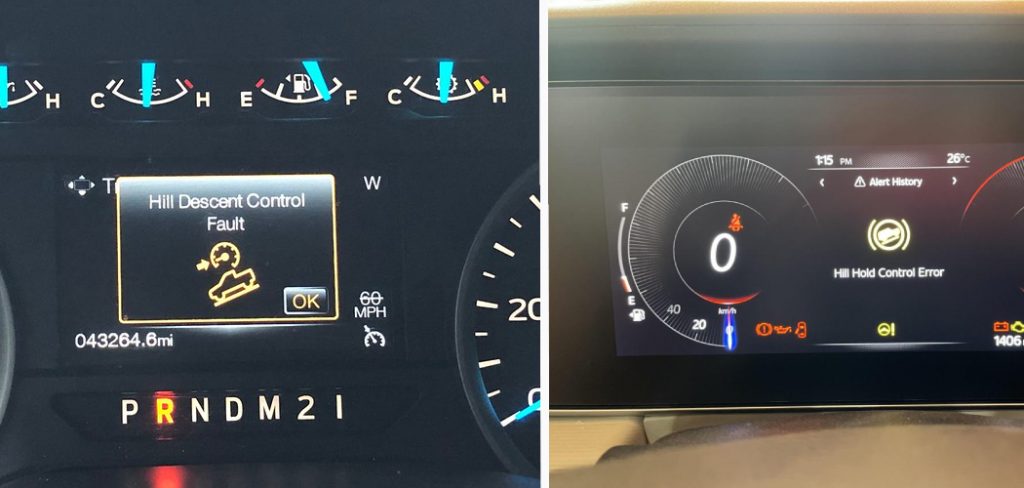
Whether you’re a seasoned off-roader or a novice explorer, mastering the techniques to address hill descent control faults ensures that your vehicle remains equipped to handle rugged landscapes effectively. In this comprehensive guide, we’ll delve into the common causes of hill descent control faults, explore troubleshooting methods, and provide practical solutions to restore this vital feature to optimal functionality. By learning how to fix hill descent control faults, drivers can regain peace of mind and confidently tackle steep descents with enhanced safety and control.
Importance of Hill Descent Control for Off-Road Safety
The importance of hill descent control (HDC) for off-road safety cannot be understated. This advanced driver-assistance system is ingeniously designed to aid drivers during steep and potentially hazardous descents by automatically controlling the vehicle’s speed and brake pressure.
With HDC, the likelihood of slippage or loss of traction is significantly reduced, thus minimizing the risk of accidents in challenging off-road conditions. For adventurers and off-road enthusiasts, HDC is more than a convenience; it is an indispensable tool that enhances the driver’s command over their vehicle, ensuring that every journey remains as safe as it is thrilling.
Understanding Hill Descent Control Systems
Hill Descent Control (HDC) systems are sophisticated examples of modern automotive technology, engineered to tackle steep gradients safely. They function by automatically applying brakes to each wheel individually, allowing for a smooth and controlled descent at a constant speed.
The system’s electronic control unit (ECU) calculates the optimal rate of descent based on slope steepness and surface conditions, thereby preventing wheel lock-up and enhancing vehicle stability. By maintaining consistent traction, HDC systems help drivers focus on steering and navigating obstacles without the distraction of manually modulating the brakes. Understanding the mechanics behind HDC is instrumental for drivers to appreciate its benefits and to troubleshoot effectively when issues arise.
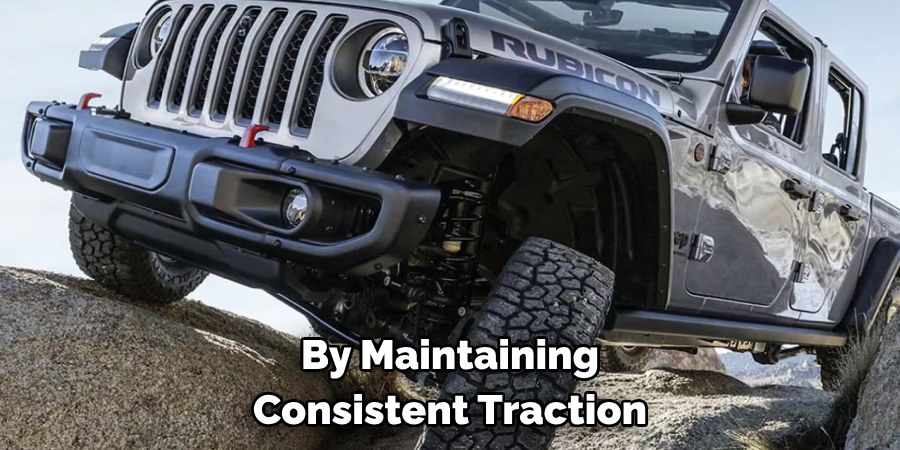
Key Components of Hill Descent Control
Hill Descent Control relies on a network of key components that work in unison to manage a vehicle’s speed on declines. The primary elements include the anti-lock braking system (ABS), wheel speed sensors, the electronic control unit (ECU), and the vehicle’s braking system. Wheel speed sensors play a crucial role by constantly monitoring the speed of each wheel and sending this data to the ECU.
The ECU processes this information, comparing the vehicle’s current speed to the desired descent speed and actuates the braking system accordingly. This selective braking to individual wheels creates the resistance needed to control descent speed on steep slopes. Additionally, the system may interface with other vehicle stability features, ensuring that HDC operates in harmony with the overall safety framework of the vehicle. Understanding each component’s role is vital for diagnosing HDC issues, as faults can arise in any part of this interconnected system.
Diagnosing Mechanical Issues in HDC Systems
Mechanical issues, including brake system failures or hydraulic leaks, can severely impair the effectiveness of Hill Descent Control systems. Brake system failures may manifest as reduced stopping power, unusual noises, or a spongy feeling when the brake pedal is pressed, indicating potential issues with brake pads, discs, or fluid pressure.
Hydraulic leaks within the HDC system are another concern that can compromise brake function by causing a loss of fluid pressure. Such leaks can typically be detected through visual inspection for wet or oily patches near the brake lines or components. Addressing these mechanical issues promptly is essential, as they not only affect HDC operation but can also pose broader safety risks. Regular maintenance and attentive monitoring of the brake system’s performance are the best defenses against these problems, ensuring continuous reliability of the HDC feature.
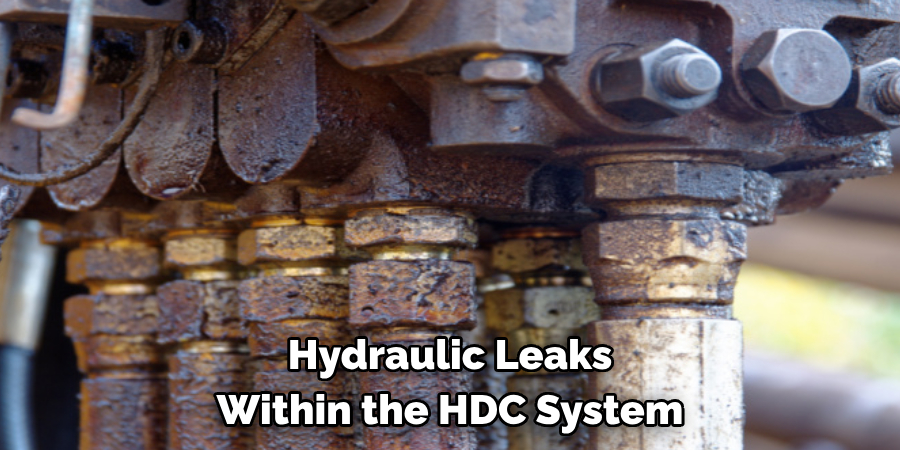
Diagnostic Procedures
When encountering a hill descent control fault, initiating a structured diagnostic procedure is imperative. First, verify the basics such as the condition of the brake pads and rotors, and ensure that the brake fluid levels are within the recommended range. Next, employ an On-Board Diagnostics (OBD) tool to check for any fault codes that may have been registered by the vehicle’s electronic control unit; these codes can often pinpoint the source of the problem.
Following the OBD scan, pay close attention to the wheel speed sensors, as these are frequently culprits in HDC malfunctions. Each sensor should be examined for physical damage, proper alignment, and electrical connectivity. If no faults are found within the wheel sensors or braking components, the issue might lie with the software that governs the HDC system, which may require a reset or an update from the manufacturer.
Careful adherence to these diagnostic procedures can reveal the root cause of most HDC faults, providing a clear path to the necessary repairs and the restoration of the hill descent control system’s functionality.
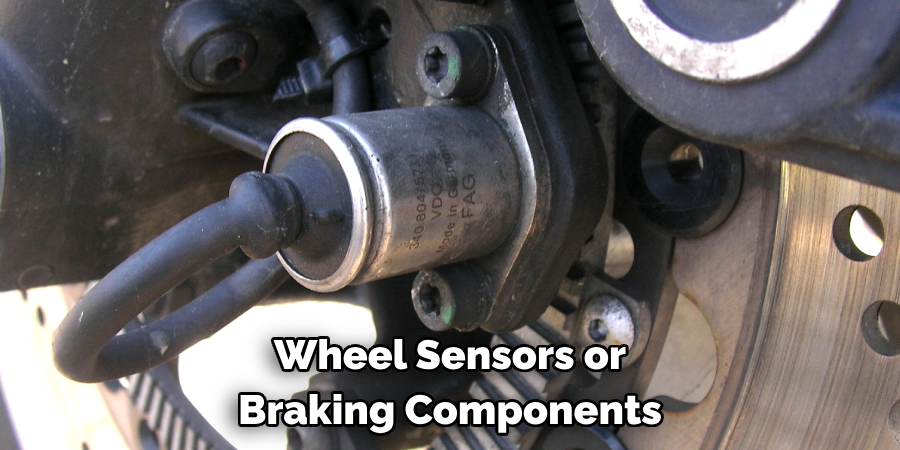
10 Methods How to Fix Hill Descent Control Fault
1. Diagnose the Issue:
Begin by diagnosing the problem to pinpoint the root cause of the hill descent control fault. Use diagnostic tools to retrieve error codes and conduct visual inspections of relevant components and wiring. Check for any damaged or corroded connections, loose or worn wires, and faulty sensors.
Once you have identified the issue, thoroughly clean and repair any damaged components. Replace worn out parts if necessary. Ensure that all wiring is properly connected and secured. If the fault persists, refer to vehicle-specific troubleshooting guides or consult a professional mechanic for further assistance.
2. Check Electrical Connections:
Inspect the electrical connections associated with the hill descent control system, including sensors, wiring harnesses, and connectors. Look for signs of corrosion, damage, or loose connections that may affect the system’s functionality. If any issues are found, repair or replace the affected parts as necessary.
Additional Content: It is important to regularly check and maintain the electrical connections in your vehicle’s hill descent control system. This will ensure that the system operates effectively and safely when needed. Corrosion or damage to these connections can cause malfunctions and potentially compromise your vehicle’s ability to navigate difficult terrain. It is recommended to include this check in your vehicle’s regular maintenance schedule.
3. Reset the System:
Resetting the hill descent control system can help clear error codes and recalibrate sensors. Follow the manufacturer’s instructions to perform a system reset and monitor for any improvements in system performance. If the issue persists, further troubleshooting may be necessary.
However, if the reset successfully resolves the issue, it is important to continue monitoring the system for any potential recurring problems. Regularly resetting the system can also help prevent any long-term damage or malfunctions.
Though it may seem like a simple step, resetting the system can make a significant difference in maintaining the overall health and functionality of your vehicle’s hill descent control system. So, if you notice any issues with the system, don’t hesitate to perform a reset and keep an eye on its performance.
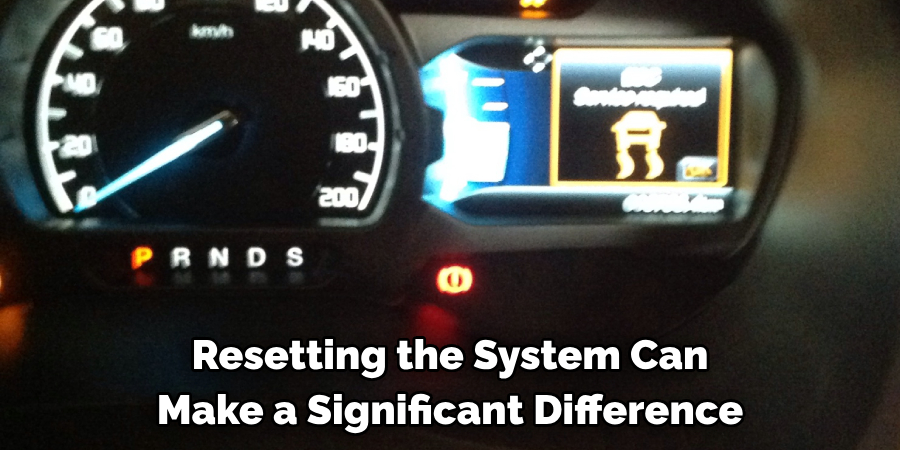
4. Inspect Brake Components:
Hill descent control often relies on the vehicle’s braking system to maintain speed during descents. Inspect brake pads, rotors, calipers, and hydraulic lines for wear, damage, or leaks that may affect braking performance. Replace any components that show signs of wear or damage to ensure safe and reliable operation on steep descents.
Further maintenance tips for brakes include regularly checking brake fluid levels and topping up as needed. Brake fluid is essential for proper braking function, so it’s important to always keep an eye on the fluid level and quality. It’s also recommended to have a professional mechanic inspect the brake system at least once a year.
In addition to regular inspections and maintenance, it’s important to drive carefully and anticipate descents when using hill descent control. This means maintaining a safe following distance, keeping an eye out for warning signs or obstacles on the road ahead, and using the brakes in conjunction with the hill descent feature as needed.
5. Test Sensors:
Test the sensors responsible for detecting wheel speed, vehicle angle, and terrain conditions. Use diagnostic tools to check sensor readings and ensure they are within the specified range. Replace any faulty sensors as needed.
Sensors are essential components of a vehicle’s electronic system that help provide vital information to the driver and other systems. These sensors can detect various parameters such as wheel speed, vehicle angle, terrain conditions, engine temperature, and many more. Make sure to regularly test and maintain these sensors to ensure the smooth functioning of your vehicle.
One of the key sensors that should be regularly tested is the wheel speed sensor. This sensor is responsible for measuring the rotational speed of each wheel and relaying that information to the vehicle’s electronic control unit (ECU). A malfunctioning wheel speed sensor can result in issues with anti-lock braking systems, traction control, and stability control. To test this sensor, use a diagnostic tool to check the readings and make sure they are within the specified range.

6. Check Hydraulic System:
If your vehicle’s hill descent control system uses hydraulic actuators or components, inspect them for leaks, damage, or malfunctions. Address any issues with the hydraulic system promptly to prevent further damage and ensure proper function.
Hydraulic systems are critical for vehicles that use hill descent control, and any problems can impact the safety and performance of your vehicle. It is important to regularly check the hydraulic system to prevent potential issues.
One way to check the hydraulic system is by inspecting it visually. Look for any signs of leaks, such as fluid dripping or pooling under the vehicle. Additionally, examine the hydraulic lines and connections for any visible damage or wear. If you notice any leaks or damage, it is crucial to address them immediately to prevent further damage and ensure safe operation of your vehicle.
7. Update Software:
Check for software updates or recalibrations available for your vehicle’s hill descent control system. Manufacturers may release updates to address known issues or improve system performance. Follow the manufacturer’s guidelines to update the system software accordingly.
It is important to regularly check for software updates for your vehicle’s hill descent control system. These updates can help improve the overall performance and safety of your vehicle. By keeping your system up-to-date, you can ensure that it is functioning at its best and providing you with the necessary support while driving.
In addition to checking for updates, it is also important to pay attention to any recalls or technical service bulletins related to your hill descent control system. These notices may indicate potential issues with the system and provide instructions on how to address them. It is crucial to follow these instructions and take appropriate action to ensure the continued functioning of your hill descent control system.

8. Inspect Control Module:
The control module is the brain of the hill descent control system. Inspect the control module for signs of damage, overheating, or water intrusion. Replace the control module if it is malfunctioning or damaged beyond repair.
Additional Content: It is important to regularly inspect and maintain the control module to ensure proper functioning of the hill descent control system. Environmental factors such as extreme temperatures, moisture, and debris can affect the performance of the control module. Regularly cleaning and protecting the control module from these elements can prolong its lifespan and prevent potential malfunctions.
9. Perform System Tests:
Conduct comprehensive system tests to assess the functionality of the hill descent control system. Test the system under various conditions, including different terrain types and angles, to ensure it operates as intended. Use specialized equipment and tools, such as an inclinometer and diagnostic software, to accurately measure the performance of the system.
It is important to perform frequent system tests to ensure that the hill descent control system is functioning properly. Regular testing can help identify any potential issues or malfunctions that may occur during operation. This not only ensures the safety of the driver and passengers but also helps maintain the overall efficiency and performance of the vehicle.
During system tests, it is essential to follow proper safety protocols and guidelines. This includes wearing appropriate protective gear and adhering to all manufacturer recommendations for testing procedures. It is also important to have a trained technician or mechanic perform the tests to ensure accurate results and proper handling of any equipment used.
10. Seek Professional Assistance:
If you’re unable to resolve the hill descent control fault on your own, seek assistance from certified mechanics or dealership service departments. They have the expertise, diagnostic tools, and resources to diagnose and repair complex issues with the hill descent control system. Moreover, they have access to the latest technical service bulletins and software updates from the manufacturer.
You can also consider joining online forums or communities dedicated to your specific vehicle make and model. Many experienced owners and enthusiasts are willing to share their knowledge and provide helpful advice on troubleshooting issues with hill descent control.
In addition, it’s important to regularly maintain your vehicle according to the manufacturer’s recommendations. This includes checking and replacing any worn or damaged components that could affect the performance of your hill descent control system.

Maintenance and Preventive Measures:
To ensure your hill descent control system operates efficiently, regular maintenance and preventive measures are key. Begin by adhering to the vehicle manufacturer’s maintenance schedule, which often includes the inspection of braking and stability control systems. Consistently check for any physical obstructions or debris that may interfere with sensors and remove them promptly.
Ensure that the vehicle’s software is up-to-date by scheduling periodic checks with your dealership or a qualified technician. These professionals have the requisite expertise to carry out detailed inspections, perform necessary updates, and advise on preventive tactics to avoid future system issues.
Adopting a proactive approach to maintenance can help mitigate the risk of unexpected failures and maintain the reliability of your hill descent control system. By investing in periodic reviews and cleanings, alongside immediate action on any issues that arise, you can preserve the sophisticated functionality that hill descent control provides, ensuring a safer and more stable driving experience on challenging terrains.
Conclusion
In conclusion, addressing a hill descent control fault is essential for maintaining safety and confidence during off-road journeys. By implementing the ten comprehensive methods on how to fix hill descent control fault, drivers can effectively diagnose and resolve issues affecting their vehicle’s hill descent control system.
Whether it involves diagnosing electrical connections, inspecting brake components, testing sensors, or updating software, each method plays a crucial role in restoring optimal functionality to the system. Additionally, seeking professional assistance when necessary ensures thorough diagnosis and expert repairs. With a proactive approach to maintenance and troubleshooting, drivers can enjoy smoother descents and enhanced control while navigating challenging terrain.

About
JeepFixes Team is a skilled author for Jeep Fixes, bringing 6 years of expertise in crafting a wide range of jeep fixes. With a strong background in jeep fixes work, JeepFixes Team’s knowledge spans various types of fixtures, from decorative pieces to functional hardware, blending precision with creativity. His passion for jeep fixes and design has made him a trusted resource in the industry.
Professional Focus:
Expert in Jeep Fixes : JeepFixes Team aesthetic specializes in creating durable and innovative jeep fixes, offering both appeal and functionality. His work reflects a deep understanding of jeep fixes techniques and materials.
Sustainability Advocate : He is dedicated to using sustainable practices, ensuring that every fixture is crafted with eco-friendly methods while maintaining high-quality standards.
In his writing for jeep fixes, JeepFixes Team provides valuable insights into the latest trends, techniques, and practical advice for those passionate about jeep fixes, whether they are professionals or DIY enthusiasts. His focus on combining artistry with engineering helps others discover the true potential of jeep in design.
